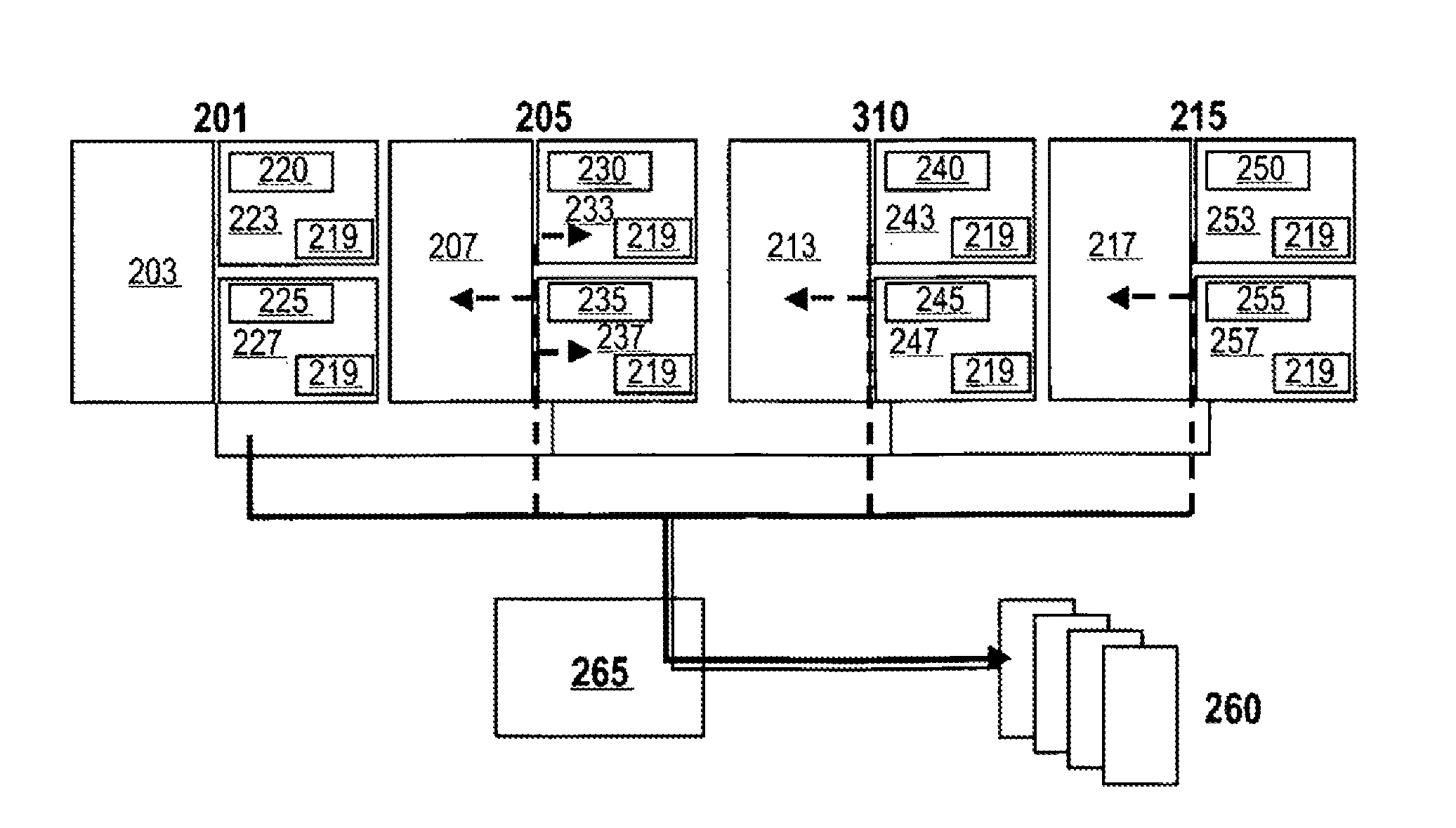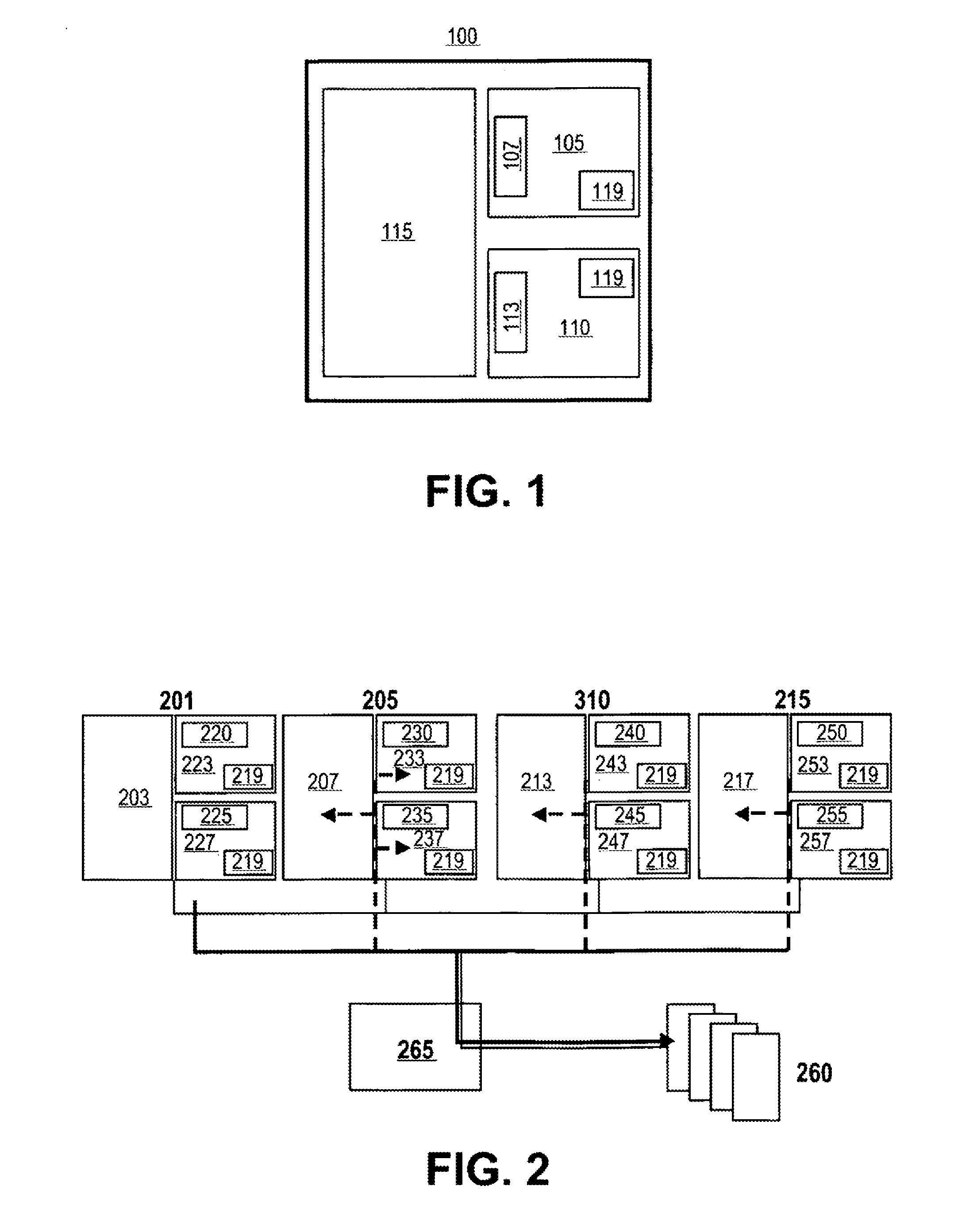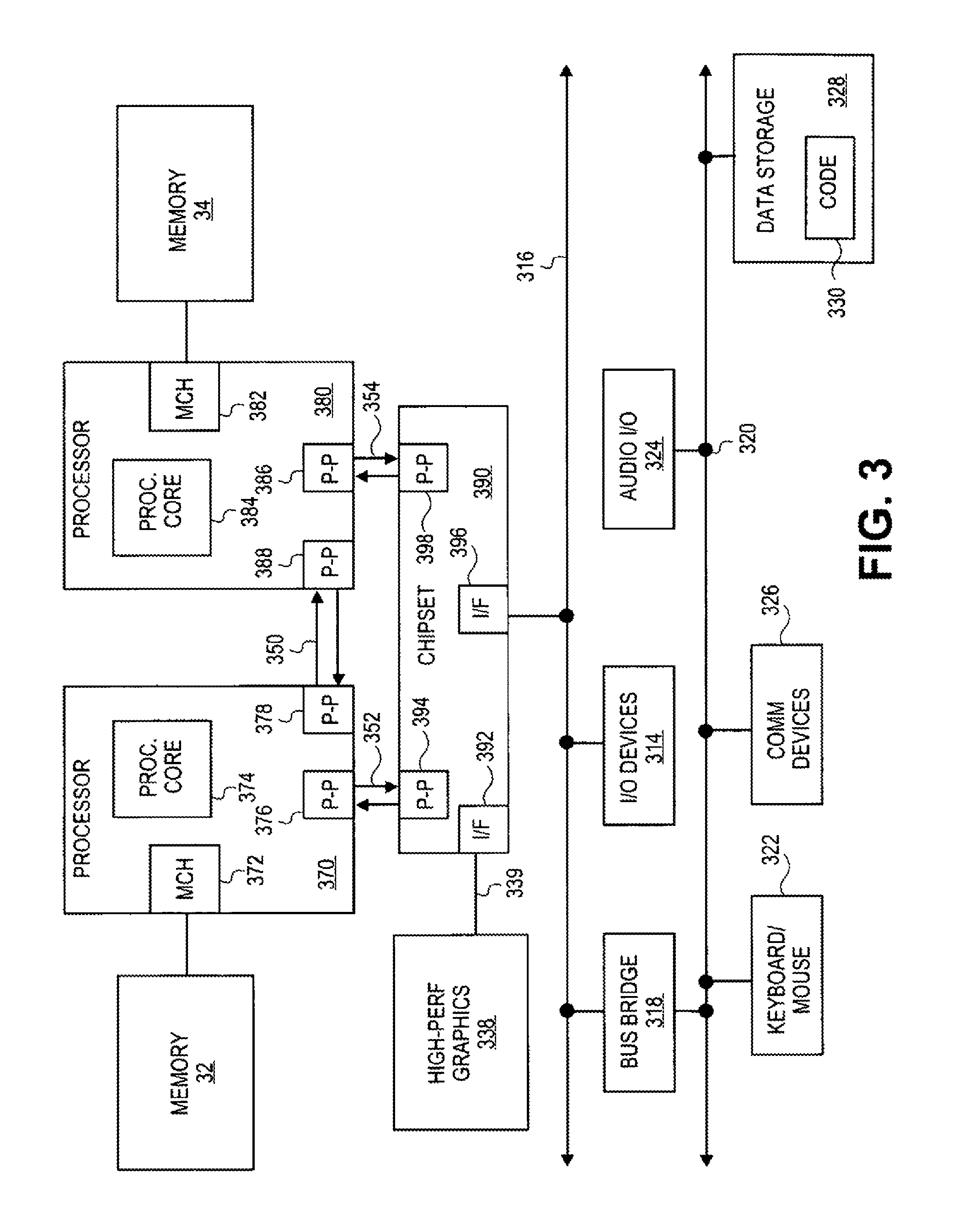Technique for communicating interrupts in a computer system
a technology of computer system and interrupt, applied in the field of information processing, can solve the problems of affecting the efficiency of sending interrupts, increasing the difficulty of managing interrupts, and high performance overhead
- Summary
- Abstract
- Description
- Claims
- Application Information
AI Technical Summary
Benefits of technology
Problems solved by technology
Method used
Image
Examples
Embodiment Construction
[0016]FIG. 1 illustrates a microprocessor in which at least one embodiment of the invention may be used. In particular, FIG. 1 illustrates microprocessor 100 having one or more processor cores 105 and 110, each having associated therewith a local cache 107 and 113, respectively. Also illustrated in FIG. 1 is a shared cache memory 115 which may store versions of at least some of the information stored in each of the local caches 107 and 113. In some embodiments, microprocessor 100 may also include other logic not shown in FIG. 1, such as an integrated memory controller, integrated graphics controller, as well as other logic to perform other functions within a computer system, such as I / O control. In one embodiment, each microprocessor in a multi-processor system or each processor core in a multi-core processor may include or otherwise be associated with logic 119 to enable interrupt communication techniques, in accordance with at least one embodiment. The logic may include circuits, ...
PUM
 Login to View More
Login to View More Abstract
Description
Claims
Application Information
 Login to View More
Login to View More - R&D
- Intellectual Property
- Life Sciences
- Materials
- Tech Scout
- Unparalleled Data Quality
- Higher Quality Content
- 60% Fewer Hallucinations
Browse by: Latest US Patents, China's latest patents, Technical Efficacy Thesaurus, Application Domain, Technology Topic, Popular Technical Reports.
© 2025 PatSnap. All rights reserved.Legal|Privacy policy|Modern Slavery Act Transparency Statement|Sitemap|About US| Contact US: help@patsnap.com



